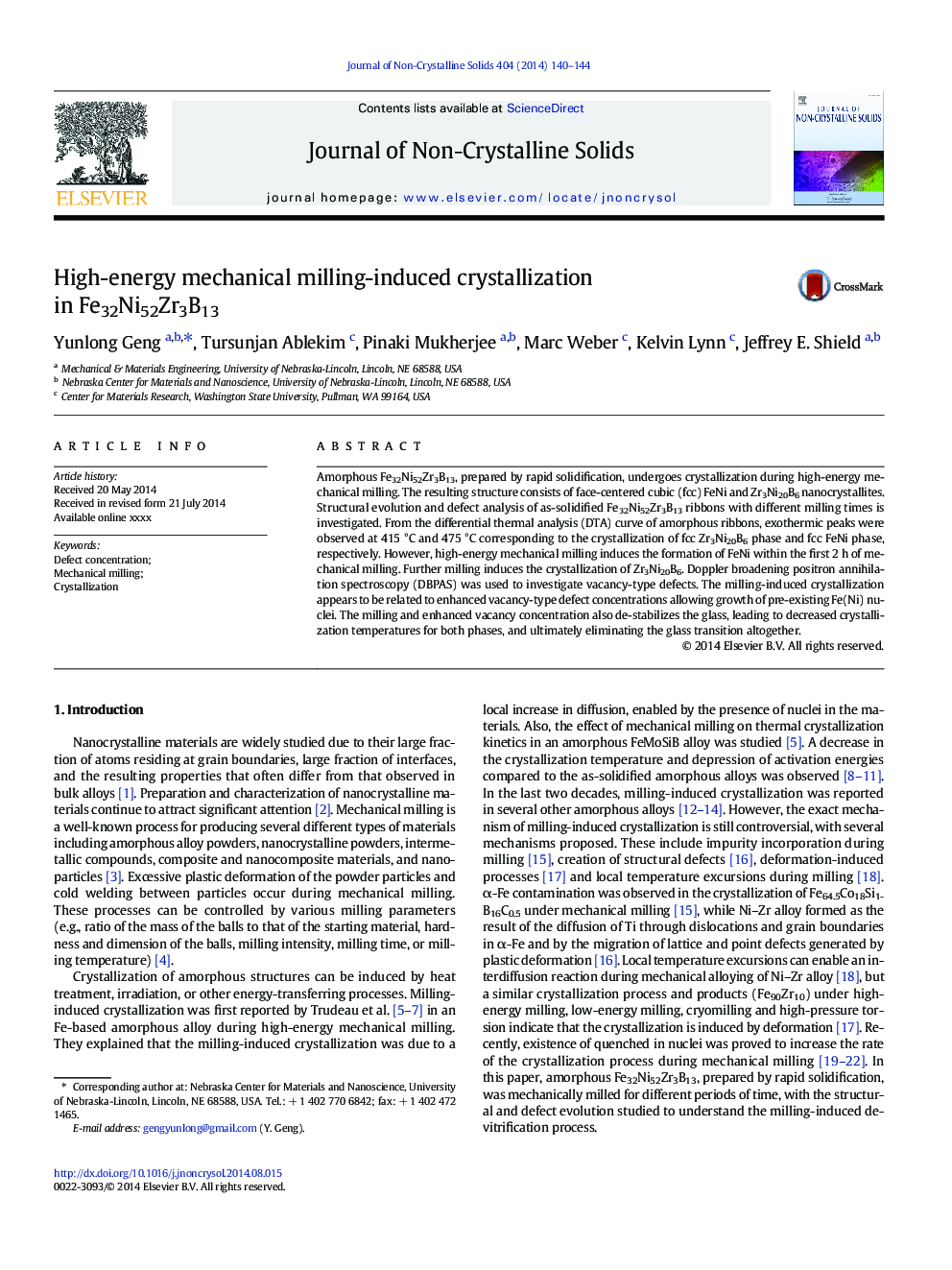| Article ID | Journal | Published Year | Pages | File Type |
|---|---|---|---|---|
| 7901797 | Journal of Non-Crystalline Solids | 2014 | 5 Pages |
Abstract
Amorphous Fe32Ni52Zr3B13, prepared by rapid solidification, undergoes crystallization during high-energy mechanical milling. The resulting structure consists of face-centered cubic (fcc) FeNi and Zr3Ni20B6 nanocrystallites. Structural evolution and defect analysis of as-solidified Fe32Ni52Zr3B13 ribbons with different milling times is investigated. From the differential thermal analysis (DTA) curve of amorphous ribbons, exothermic peaks were observed at 415 °C and 475 °C corresponding to the crystallization of fcc Zr3Ni20B6 phase and fcc FeNi phase, respectively. However, high-energy mechanical milling induces the formation of FeNi within the first 2 h of mechanical milling. Further milling induces the crystallization of Zr3Ni20B6. Doppler broadening positron annihilation spectroscopy (DBPAS) was used to investigate vacancy-type defects. The milling-induced crystallization appears to be related to enhanced vacancy-type defect concentrations allowing growth of pre-existing Fe(Ni) nuclei. The milling and enhanced vacancy concentration also de-stabilizes the glass, leading to decreased crystallization temperatures for both phases, and ultimately eliminating the glass transition altogether.
Related Topics
Physical Sciences and Engineering
Materials Science
Ceramics and Composites
Authors
Yunlong Geng, Tursunjan Ablekim, Pinaki Mukherjee, Marc Weber, Kelvin Lynn, Jeffrey E. Shield,
